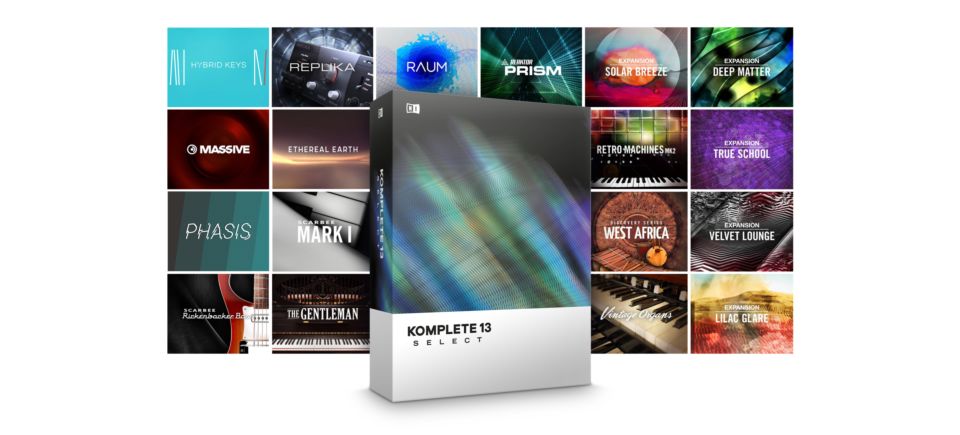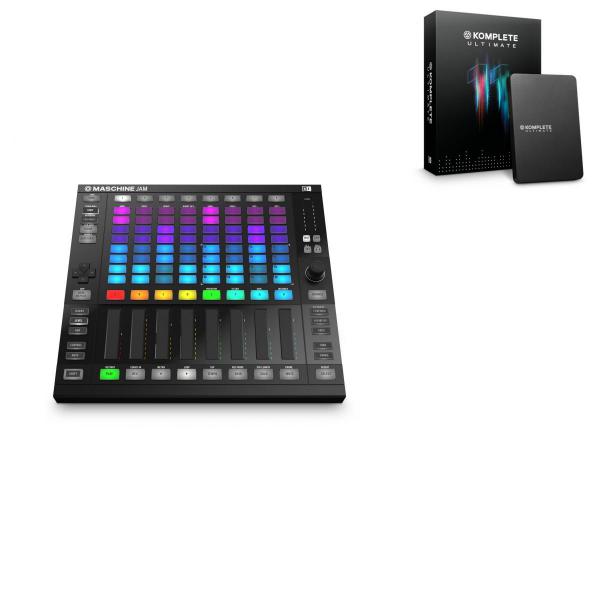

It is, of course, a bigger device in general, so it can afford to pack in a few extra buttons, pads, and encoders.Ĭontrols and Functionality Winner: Maschine MK3Ĭheck Latest Price 5. Controls and Functionality: Bottom LineĪll in all, the Maschine MK3 offers a little bit more on the physical controls front.
Komplete 11 select for maschine plus#
It has the same number of pads as the Maschine, though they are a little smaller, and a couple of screens that do more or less what the Maschine’s do.Ĥ rotary encoders (plus one main encoder), plus a few other buttons such as start, stop, and record, make up the control set. The Akai MPC One is a classy and tactile device, for sure. The two screens are beautiful to use, are the 8 rotary encoders below them, that control different parameters depending on what mode you’re in and what you’ve got up on the screens.īetween the 8 instrument banks (A through H), and the solo and mute controls alone, I’ve been able to craft some seriously fun beats. The assignable colors are a nice touch too. The 16 gigantic pads are incredibly tactile and responsive, with velocity sensitivity built right in. There are few controllers that beat the MK3’s functionality. Controls and Functionality: Maschine MK3 vs Akai MPC One Controls and Functionality: Maschine MK3 If you’re happy working with a laptop plugged in at all times, and want access to the incredible range of instruments that Native Instruments offers, then it’s the Maschine MK3 for you.Ĭheck Latest Price 2.

If you require a standalone unit, then it’ll have to be the MPC One. The finish is very classy too, though, in my opinion, the Maschine is a cut above. It’s a standalone unit (meaning it doesn’t need to connect to your computer) and is primarily designed for sample editing and MIDI sequencing.Īs such, it has a few connections that the Maschine doesn’t (CV/gate plugs) and will talk with your other devices via MIDI. The Maschine is a classy unit, built for the rigors of live performance, but with a sleek and sexy finish that brings a touch of elegance to any home studio. The MK3 represents a huge step up from previous Maschines, most notably with its 2 high-resolution displays and huge pads. To that end, it’s an incredibly complex and deep device (though getting set up and smacking out a few beats is pretty simple). The Maschine MK3 is a full-scale music production box, designed to connect with your computer via USB, and run the Native Instruments Maschine software. Product Design: Maschine MK3 vs Akai MPC One Product Design: Maschine MK3 Go for Akai MPC One if you need a standalone unit for music production without a computer, need to connect to other gear via CV/gate, and/or are looking for a controller with the best sampling functionality around.Ĭheck Latest Price 1.Grab it if you’re used to working with a laptop as part of your music production workflow. Go for Maschine MK3 if you’re looking for a beautifully classy, tactile device for music production, beat creation, sampling, and sequencing.So when it comes down to Maschine MK3 vs Akai MPC One, which one should you choose? Here’s a quick overview: The MPC One connects to other devices via CV/Gate.The Maschine MK3 has more physical performance controls and functions.The MPC One has a better sampling workflow.The Maschine needs to be plugged into a computer, whereas the MPC One is a standalone device.The main differences between Maschine MK3 and Akai MPC One are: Main Differences: Maschine MK3 and Akai MPC One Pros & Cons: Maschine MK3 vs Akai MPC One Price & Value For Money: Maschine MK3 vs Akai MPC One Composition: Maschine MK3 vs Akai MPC One Live Performance: Maschine MK3 vs Akai MPC One Inputs and Outputs: Maschine MK3 vs Akai MPC One Controls and Functionality: Bottom Line.Controls and Functionality: Akai MPC One.Controls and Functionality: Maschine MK3.Controls and Functionality: Maschine MK3 vs Akai MPC One Product Design: Maschine MK3 vs Akai MPC One



 0 kommentar(er)
0 kommentar(er)
